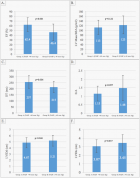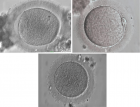Abstract
Review Article
The “manna” extracted from the ash trees still cultivated in Sicily from mythical food to pharmaceutical and nutraceutical resource
Vivienne Spadaro* and Francesco Maria Raimondo
Published: 30 August, 2022 | Volume 6 - Issue 1 | Pages: 038-048
“Manna” is the product obtained from the solidification of the elaborate sap that comes out of the incisions made during the summer season on the stem and on the main branches of some species of the genus Fraxinus (Oleaceae). The cultivation of manna ash trees dates back to ancient times in Sicily and elsewhere ash trees – known as sacred trees, a symbol of abundance and therefore auspicious – was increasingly widespread until the middle of the last century. Subsequently, however, the crop underwent a progressive decline, remaining relegated to restricted areas of Sicily, in particular in the Madonie district (Palermo, Italy). In this brief review, the essential characteristics of the manna and the ash trees from which it is extracted are summarized. The aspects of the current productivity of manna in the Sicilian territory and the implications of a potential recovery and increase of an ancient craft, ash tree cultivation, are also reported in a perspective of sustainable development and green economy for the Mediterranean area and beyond. Finally, the authors remember what has been done to ensure the conservation not only of the active cultivation of manna ash but also of all the relative agro-biodiversity. The conservation of the living germplasm of the ancient cultivars recovered in the Madonie area (Palermo, Sicily) represents one of the most qualifying results.
Read Full Article HTML DOI: 10.29328/journal.afns.1001036 Cite this Article Read Full Article PDF
Keywords:
Natural resource; Traditional drugs; Fraxinus cultivation; Food; Pharmaceutical; Nutraceutical products; Mediterranean area
References
- Raimondo FM, Bonomo R, Lentini F. The manna ash in Sicily, a medicinal plant to be re-evaluated. Day Bot. Ital. 1980; 114 (3-4): 141-142.
- McKenna T. Food of the Gods: the search for the original tree of knowledge, a radical history of plants, drugs, and human evolution. Bantam Books. 1993.
- Wotton RS. What was manna?. Opticon 1826. 2010; 9.
- Raimondo FM, Ilardi V, Schicchi R. A presentation of the remains of the manna ash crop in the Mediterranean. The Echo of Gibilmanna. 1995; 157-164.
- Merkur D. The mystery of manna: the psychedelic sacrament of the bible. Park Street Press. 2000.
- Wong FK. Manna revisited: a study of the mythological and interpretative contexts of manna. Harvard Theological Review. 2002; 95(49): 459-461.
- Donkin RA. The" Manna Lichen": Lecanora esculenta. Anthropos. 1981; (H. 3./4): 562-576.
- Harrison SG. Manna and its sources. Kew Bulletin. 1950; 5(3): 407-417.
- Mameli Calvino E. Lecanora. In: Italian Encyclopedia. Treccani Institute of the Italian Encyclopedia, Rome. 1933.
- Winston I, Benson S, Minnick S. The significance of lichen Bulletin of the California Lichen Society. 2016; 23(2): 9-13.
- Goga M, Elečko J, Marcinčinová M, Ručová D, Bačkorová M, et al. Lichen metabolites: an overview of some secondary metabolites and their biological potential. Co-evolution of secondary metabolites. 2020; 175-209.
- Linnaeus C Species Plantarum.1753; 2: 1057.
- Spadaro V, Raimondo FM. The manna of the Madonie (Sicily): from ash trees to pharmaceutical and food products. Mediterranean food. 2011; 1: 22-25.
- Piterà di Clima F, Nicoletti M. Gemmotherapy. Scientific foundations of modern Meristemotherapy. 2016; 405-410. Nuova Ipsa Editore s.r.l. Palermo.
- Carvalho AM, Castro J. Cultural aspects of the trees in selected European countries. Valbro-Cost E42: Valuable Broadleaved Trees in Europe. 2008.
- Peroni G. Driope, or the pact between man and nature. Treatise on phytotherapy. 2012; 392-395. Nuova Ipsa Publisher, Palermo.
- Adrosko RJ. Natural dyes and home dyeing. 2012; Courier Corporation.
- Bechtold T, Mahmud-Ali A, Mussak RAM. Reuse of ash-tree (Fraxinus excelsior) bark as natural dyes for textile dyeing: process conditions and process stability. Color Technol. 2007; 123:271–279.
- Papachristou TG. Intake, digestibility and nutrient utilization of oriental hornbeam and manna ash browse by goats and sheep. Small Ruminant Research. 1997; 23(2-3): 91-98.
- Kinghora AD, Soejarto DD, Inglett GE. Sweetening agents of plant origin. Critical reviews in plant sciences. 1986; 4(2): 79-120.
- Kostova I, Iossifova T. Chemical components of Fraxinus species. Fitoterapia. 2007 Feb;78(2):85-106. doi: 10.1016/j.fitote.2006.08.002. Epub 2006 Nov 14. PMID: 17184933.
- Sarfraz I, Rasul A, Jabeen F, Younis T, Zahoor MK, Arshad M, Ali M. Fraxinus: A Plant with Versatile Pharmacological and Biological Activities. Evid Based Complement Alternat Med. 2017;2017:4269868. doi: 10.1155/2017/4269868. Epub 2017 Nov 27. PMID: 29279716; PMCID: PMC5723943.
- Visen P, Saraswat B, Visen A, Roller M, Bily A, Mermet C, He K, Bai N, Lemaire B, Lafay S, Ibarra A. Acute effects of Fraxinus excelsior L. seed extract on postprandial glycemia and insulin secretion on healthy volunteers. J Ethnopharmacol. 2009 Nov 12;126(2):226-32. doi: 10.1016/j.jep.2009.08.039. Epub 2009 Aug 31. PMID: 19723572.
- Flanagan J, Meyer M, Pasamar MA, Ibarra A, Roller M, Alvarez i Genoher N, Leiva S, Gomez-García F, Alcaraz M, Martínez-Carrasco A, Vicente V. Safety evaluation and nutritional composition of a Fraxinus excelsior seed extract, FraxiPure™. Food Chem Toxicol. 2013 Mar;53:10-7. doi: 10.1016/j.fct.2012.11.030. Epub 2012 Nov 28. PMID: 23201448.
- Giardinieri A, Schicchi R, Geraci A, Rosselli S, Maggi F, Fiorini D, Ricciutelli M, Loizzo MR, Bruno M, Pacetti D. Fixed oil from seeds of narrow-leaved ash (F. angustifolia subsp. angustifolia): Chemical profile, antioxidant and antiproliferative activities. Food Res Int. 2019 May;119:369-377. doi: 10.1016/j.foodres.2019.02.013. Epub 2019 Feb 6. PMID: 30884667.
- Bouguellid G, Russo C, Lavorgna M, Piscitelli C, Ayouni K, Wilson E, Kim HK, Verpoorte R, Choi YH, Kilani-Atmani D, Atmani D, Isidori M. Antimutagenic, antigenotoxic and antiproliferative activities of Fraxinus angustifolia Vahl. leaves and stem bark extracts and their phytochemical composition. PLoS One. 2020 Apr 16;15(4):e0230690. doi: 10.1371/journal.pone.0230690. PMID: 32298276; PMCID: PMC7161964.
- Mazzola P, Schicchi R, Venturella G. La cultura dei frassini attraverso l’erbario di F. Minà Palumbo. Museol. Sci.1990; 7 (3-4): 295-273.
- Schicchi R, Camarda L, Spadaro V, Pitonzo R. Chemical characterization of manna extracted in Madonie (Sicily) from cultivars of Fraxinus angustifolia and Fraxinus ornus (Oleaceae). Quad. Bot. Amb. Appl. 2006; 17 (2): 151-174.
- Lazzarini E, Lonardoni AR. The health manna from nature. Mediterranean Editions, Rome. 1984.
- Grembecka M. Sugar alcohols-their role in the modern world of sweeteners: a review.European Food Research and Technology. 2015; 241(1): 1-14.
- Milburn JA, Tyree MT, Lo Gullo MA, Salleo S. The physiology of sap transport in the genus Fraxinus. Proceedings of the European Society of Plant Physiology. 1980; 510-511.
- Oddo E, Saiano F, Bellini E, Alonzo G. Analysis of the mannitol content of manna from two species of ash grown in Sicily. Quad. Bot. Environmental Appl. 1997; 8 (1997): 61-63.
- Livesey G. Health potential of polyols as sugar replacers, with emphasis on low glycaemic properties. Nutr Res Rev. 2003 Dec;16(2):163-91. doi: 10.1079/NRR200371. PMID: 19087388.
- Ruiz-Ojeda FJ, Plaza-Díaz J, Sáez-Lara MJ, Gil A. Effects of Sweeteners on the Gut Microbiota: A Review of Experimental Studies and Clinical Trials. Adv Nutr. 2019 Jan 1;10(suppl_1):S31-S48. doi: 10.1093/advances/nmy037. Erratum in: Adv Nutr. 2020 Mar 1;11(2):468. PMID: 30721958; PMCID: PMC6363527.
- Caligiani A, Tonelli L, Palla G, Marseglia A, Rossi D, Bruni R. Looking beyond sugars: phytochemical profiling and standardization of manna exudates from Sicilian Fraxinus excelsior L. Fitoterapia. 2013 Oct;90:65-72. doi: 10.1016/j.fitote.2013.07.002. Epub 2013 Jul 10. PMID: 23850543.
- Cornara L, Sanclemente G, Robustelli della Cuna FS, Preda S, Raimondo FM. Manna, the gift of the Madonie. Herbal Medicine Tomorrow. 2017; 402: 74-85.
- Attanzio A, D'Anneo A, Pappalardo F, Bonina FP, Livrea MA, Allegra M, Tesoriere L. Phenolic Composition of Hydrophilic Extract of Manna from Sicilian Fraxinus angustifoliaVahl and its Reducing, Antioxidant and Anti-Inflammatory Activity in Vitro. Antioxidants (Basel). 2019 Oct 18;8(10):494. doi: 10.3390/antiox8100494. PMID: 31635261; PMCID: PMC6826888.
- Restivo I, Tesoriere L, Frazzitta A, Livrea MA, Attanzio A, Allegra M. Anti-Proliferative Activity of A Hydrophilic Extract of Manna from Fraxinus angustifoliaVahl through Mitochondrial Pathway-Mediated Apoptosis and Cell Cycle Arrest in Human Colon Cancer Cells. Molecules. 2020 Oct 30;25(21):5055. doi: 10.3390/molecules25215055. PMID: 33143282; PMCID: PMC7663425.
- Stoyanova M. Contents of mineral elements in leaves and bark of mountain ash (Fraxinus excelsior ) and manna ash (Fraxinus ornus L.). Naukaza Gorata. 2009; 46(2): 65-72.
- Alaimo MG, Geraci A, Schicchi R, Varrica D. Preliminary study on trace metal content in manna extracted from Fraxinus angustifolia cultivars in Madonie (Sicily, Italy). Sdrp Journal of Earth Sciences & Environmental 2019; 4: 661-667.
- Moses AG, Maobe Gitu EGL., Rotich H. Profile of heavy metals in selected medicinal plants used for the treatment of diabetes, malaria and pneumonia in Kisii region, southwest Global J. Pharmacol. 2012; 6(3): 245-251.
- Jurowski K, Szewczyk B, Nowak G, Piekoszewski W. Biological consequences of zinc deficiency in the pathomechanisms of selected diseases. J Biol Inorg Chem. 2014 Oct;19(7):1069-79. doi: 10.1007/s00775-014-1139-0. Epub 2014 Apr 19. Erratum in: J Biol Inorg Chem. 2015 Oct;20(7):1219. PMID: 24748223; PMCID: PMC4175048.
- Pezzana A, Bersani L, Baldereschi F, Ponzio R, Frighi Z, et al. An “LCA” Approach to Slow Food Presidia Products: From Agro-Environmental and SocioCultural Aspects to Economic Sustainability and Nutritional Evaluations. 2014; 9th International Conference LCA of Food. San Francisco, USA.
- Lubrano C, Touzeau B, Laperdrix C, Robin J. Development of a cosmetic plant active ingredient: sustainable and scientific considerations. The example of an ash manna tree extract (Fraxinus ornus ). Planta Med. 2013; 79: 1110.
- Minà Palumbo Monografia sulla coltivazione del frassino. Agric. Ital. 1875-1876; 2(19): 307-312; (20): 363-366; (21): 407-411; (22-23): 487-491; (24): 554-559; (25): 606-612.
- Mazzola P, Schicchi R, Spadaro Ricerche finalizzate al recupero e conservazione del germoplasma dei frassini da manna sulle Madonie (Sicilia settentrionale). Atti 101° Congresso Soc. Bot. Ital., Caserta 2006: p. 137.
- Mazzola P, Raimondo FM, Spadaro V. Protection and conservation of the manna ash landscape in Sicily. In: Chiatante D, Domina G, Montagnoli A & Raimondo FM (eds). Sustainable restoration of Mediterranean forests (Palermo) – Medit. 2017; 27: 68-69.
- Attanzio A, Tesoriere L, Allegra M, Livrea MA. Phytochemicals and Nutraceuticals: the biochemical core of the Mediterranean Bocconea. 2019; 28: 241-247.
- Raimondo FM, Salmeri C, Spadaro V. Problematicità tassonomiche e corologiche nel genere Fraxinus (Oleaceae) in Italia. Notiziario Soc Bot Ital. 2017; 1: 29-30.
Figures:

Figure 1
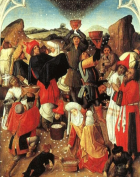
Figure 2
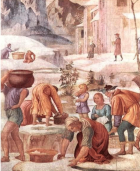
Figure 3
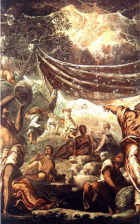
Figure 4
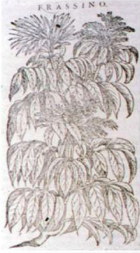
Figure 5

Figure 6

Figure 7
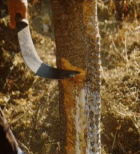
Figure 8
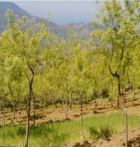
Figure 9

Figure 10
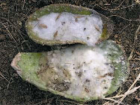
Figure 11
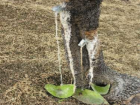
Figure 12
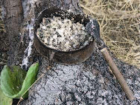
Figure 13

Figure 14
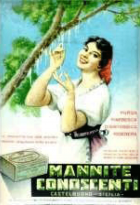
Figure 15
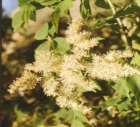
Figure 16

Figure 17
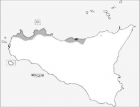
Figure 18
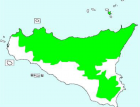
Figure 19
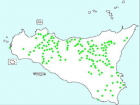
Figure 20
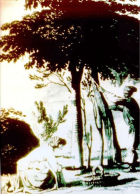
Figure 21

Figure 22
Similar Articles
-
Anti-nutrient and mineral properties of Complementry Food produced from Malted Red Sorgum and Defatted Soybean Flour BlendOloye DA*,Agbaje RB,Olatunji CA,Olawale-Olakunle OE. Anti-nutrient and mineral properties of Complementry Food produced from Malted Red Sorgum and Defatted Soybean Flour Blend. . 2017 doi: 10.29328/journal.afns.1001006; 1: 033-038
-
Assessment of Complementary Feeding Practice of infants and young children aged 6-23 months in Gode Town, Somali Regional State of EthiopiaYimer Mihretie*. Assessment of Complementary Feeding Practice of infants and young children aged 6-23 months in Gode Town, Somali Regional State of Ethiopia. . 2017 doi: 10.29328/journal.afns.1001008; 1: 045-057
-
Chemical composition and organoleptic properties of Cocoyam starch-wheat flour blend noodlesAdedeji Temileye Omotayo*. Chemical composition and organoleptic properties of Cocoyam starch-wheat flour blend noodles. . 2017 doi: 10.29328/journal.afns.1001009; 1: 058-062
-
Development and quality evaluation of Jam from Watermelon (Citrullus Lanatus) and Pawpaw (Carica Papaya) juiceAdedeji Temileye Omotayo*. Development and quality evaluation of Jam from Watermelon (Citrullus Lanatus) and Pawpaw (Carica Papaya) juice. . 2017 doi: 10.29328/journal.afns.1001010; 1: 063-071
-
Lemongrass tea consumption and changes in Acid-Base Balance and Electrolyte homeostasisChristopher E Ekpenyong*. Lemongrass tea consumption and changes in Acid-Base Balance and Electrolyte homeostasis. . 2018 doi: 10.29328/journal.afns.1001016; 2: 041-051
-
Environmental Risk factors associated with Breast Cancer in Gaza StripJamal Safi*,Asad Ashour. Environmental Risk factors associated with Breast Cancer in Gaza Strip. . 2019 doi: 10.29328/journal.afns.1001017; 3: 001-009
-
Possible links between consumption of A1 “like” milk And Type 1 Diabetes (T1D)Mohammad Raies Ul Haq*,Asima H,Aarif B. Possible links between consumption of A1 “like” milk And Type 1 Diabetes (T1D) . . 2019 doi: 10.29328/journal.afns.1001018; 3: 010-016
-
Effect of ginger flour supplementation on fermented millet flour ‘ibyer’ anti-diabetic and biochemical propertiesOgori AF*,Adakole MI,Ikya JK,Girgih AT,Upev V. Effect of ginger flour supplementation on fermented millet flour ‘ibyer’ anti-diabetic and biochemical properties. . 2020 doi: 10.29328/journal.afns.1001025; 4: 029-035
-
The sugarcane byproducts to a food security in an ecofriendly way: A reviewOscar Almazán del Olmo*,Indira Pérez. The sugarcane byproducts to a food security in an ecofriendly way: A review. . 2022 doi: 10.29328/journal.afns.1001031; 6: 001-005
-
Agaricus brasiliensis (Sun mushroom) and its therapeutic potential: A reviewAline Mayrink de Miranda*. Agaricus brasiliensis (Sun mushroom) and its therapeutic potential: A review. . 2022 doi: 10.29328/journal.afns.1001032; 6: 006-015
Recently Viewed
-
Success, Survival and Prognostic Factors in Implant Prosthesis: Experimental StudyEpifania Ettore*, Pietrantonio Maria, Christian Nunziata, Ausiello Pietro. Success, Survival and Prognostic Factors in Implant Prosthesis: Experimental Study. J Oral Health Craniofac Sci. 2023: doi: 10.29328/journal.johcs.1001045; 8: 024-028
-
Agriculture High-Quality Development and NutritionZhongsheng Guo*. Agriculture High-Quality Development and Nutrition. Arch Food Nutr Sci. 2024: doi: 10.29328/journal.afns.1001060; 8: 038-040
-
A Low-cost High-throughput Targeted Sequencing for the Accurate Detection of Respiratory Tract PathogenChangyan Ju, Chengbosen Zhou, Zhezhi Deng, Jingwei Gao, Weizhao Jiang, Hanbing Zeng, Haiwei Huang, Yongxiang Duan, David X Deng*. A Low-cost High-throughput Targeted Sequencing for the Accurate Detection of Respiratory Tract Pathogen. Int J Clin Virol. 2024: doi: 10.29328/journal.ijcv.1001056; 8: 001-007
-
A Comparative Study of Metoprolol and Amlodipine on Mortality, Disability and Complication in Acute StrokeJayantee Kalita*,Dhiraj Kumar,Nagendra B Gutti,Sandeep K Gupta,Anadi Mishra,Vivek Singh. A Comparative Study of Metoprolol and Amlodipine on Mortality, Disability and Complication in Acute Stroke. J Neurosci Neurol Disord. 2025: doi: 10.29328/journal.jnnd.1001108; 9: 039-045
-
Development of qualitative GC MS method for simultaneous identification of PM-CCM a modified illicit drugs preparation and its modern-day application in drug-facilitated crimesBhagat Singh*,Satish R Nailkar,Chetansen A Bhadkambekar,Suneel Prajapati,Sukhminder Kaur. Development of qualitative GC MS method for simultaneous identification of PM-CCM a modified illicit drugs preparation and its modern-day application in drug-facilitated crimes. J Forensic Sci Res. 2023: doi: 10.29328/journal.jfsr.1001043; 7: 004-010
Most Viewed
-
Evaluation of Biostimulants Based on Recovered Protein Hydrolysates from Animal By-products as Plant Growth EnhancersH Pérez-Aguilar*, M Lacruz-Asaro, F Arán-Ais. Evaluation of Biostimulants Based on Recovered Protein Hydrolysates from Animal By-products as Plant Growth Enhancers. J Plant Sci Phytopathol. 2023 doi: 10.29328/journal.jpsp.1001104; 7: 042-047
-
Sinonasal Myxoma Extending into the Orbit in a 4-Year Old: A Case PresentationJulian A Purrinos*, Ramzi Younis. Sinonasal Myxoma Extending into the Orbit in a 4-Year Old: A Case Presentation. Arch Case Rep. 2024 doi: 10.29328/journal.acr.1001099; 8: 075-077
-
Feasibility study of magnetic sensing for detecting single-neuron action potentialsDenis Tonini,Kai Wu,Renata Saha,Jian-Ping Wang*. Feasibility study of magnetic sensing for detecting single-neuron action potentials. Ann Biomed Sci Eng. 2022 doi: 10.29328/journal.abse.1001018; 6: 019-029
-
Pediatric Dysgerminoma: Unveiling a Rare Ovarian TumorFaten Limaiem*, Khalil Saffar, Ahmed Halouani. Pediatric Dysgerminoma: Unveiling a Rare Ovarian Tumor. Arch Case Rep. 2024 doi: 10.29328/journal.acr.1001087; 8: 010-013
-
Physical activity can change the physiological and psychological circumstances during COVID-19 pandemic: A narrative reviewKhashayar Maroufi*. Physical activity can change the physiological and psychological circumstances during COVID-19 pandemic: A narrative review. J Sports Med Ther. 2021 doi: 10.29328/journal.jsmt.1001051; 6: 001-007

HSPI: We're glad you're here. Please click "create a new Query" if you are a new visitor to our website and need further information from us.
If you are already a member of our network and need to keep track of any developments regarding a question you have already submitted, click "take me to my Query."






